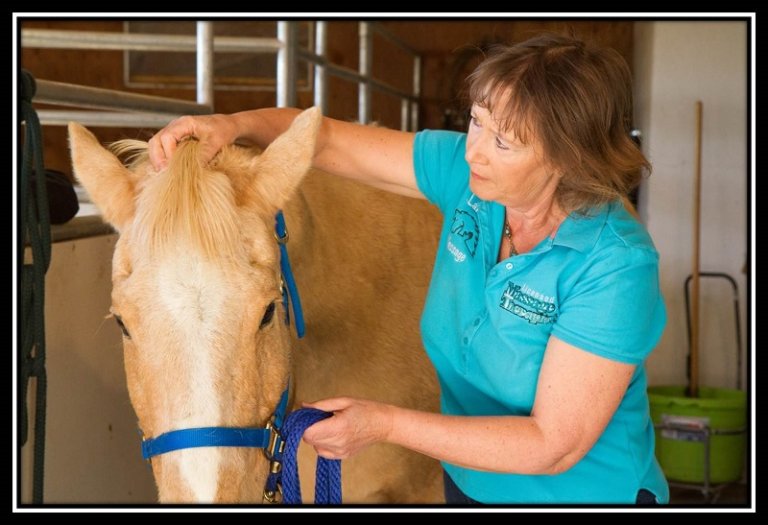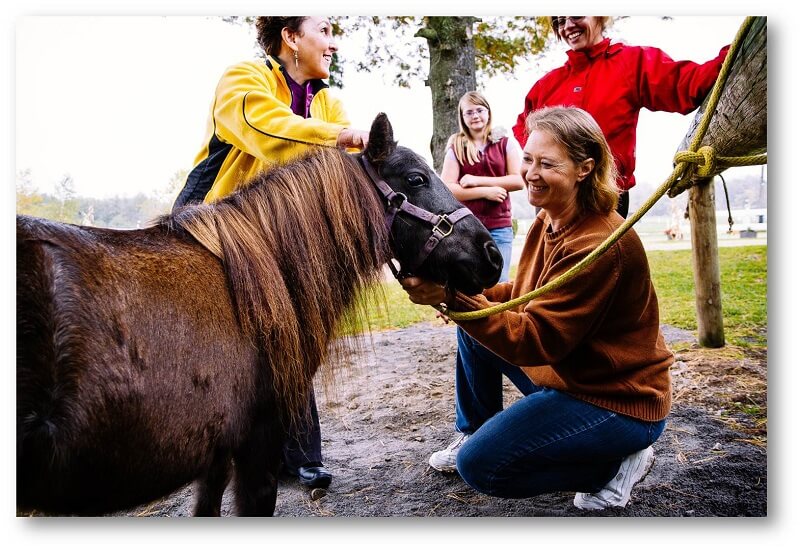RECOGNIZE THE SIGNS THAT YOUR HORSE NEEDS HELP
By Mary Lou Langley LMT

In my experience as a licensed human and equine massage therapist, I’ve found all horses benefit from massage.
The key is to recognize the language of pain, when a horse whispers (or screams), “Help me!” What is rewarding about providing equine massage is the opportunity to be a voice for the horse. A session may bring light to their individual story (or a piece of the puzzle) of how they came to be the way they are.
How a horse stands, moves, and acts are all indicators of musculoskeletal compensation. Every part of a horse’s body is connected. Simply stated, when one part is weakened, another region is taxed. This area then becomes overworked and guarding of muscles or injury can develop. If left undetected and untreated things go from bad to worse.
Time is not your friend when it comes to resolving muscle restrictions. Adhered muscle fibers or scar tissue need to be manually manipulated to be released. These restrictions won’t go away on their own, perpetuating the vicious pain cycle and likelyhood of continued injury and lameness.
Massage stretches, flattens and broadens the muscle fibers. Freeing up an inflexible muscle increases the flow of oxygen-rich blood to the area and removes metabolic waste-toxins. Massage can facilitate a nervous system response. We want to flip off the switch on the primitive brain of “fight or flight” and turn on the parasympathetic nervous system which governs the rest and peaceful state. A horse that is “jacked-up” and unable to mentally relax won’t perform at its best.
Horse owners can recognize signs that are indicative of the language of discomfort and pain. The following list depicts some of these signs.
Teeth, Head and Neck Issues
- Biting or grinding teeth
- Pinning ears, ear and head evasion
- Head tossing and shaking
- High-headed or stargazing
- Bridling issues (doesn’t open mouth)
- Stiff neck, lack of flexion at poll, tight shoulder, can’t stay collected
Barrel/Rib Area
- Cinchy
- Sore back
- Breathing problems (with exertion)
Hind End Issues
- Swishing, wringing or clamped down tail
- Kicking
- Dragging toes
Gait Deviations (Decline in Performance)
- Short-striding, lead refusals, or can’t maintain gaits
- Stiffness in a gait or lateral movement, not rounding up in the back or stepping under with the hinds, refusals or reluctance to perform a task (horses are not just being lazy, there is usually a reason they don’t want to do it!)
- Stumbling
Behavioral
- Attitude: depressed, stressed, anxious, irritable or lethargic
- Doesn’t want to be touched (groomed)
- Rearing or crow hopping
While teaching this material at a two-day clinic, a horse owner cried out, “Shoot, my horse does everything on the list!” She was very pleased to learn basic techniques to assist her horse in recovery.

Horses are creatures of habit and masters at hiding their weaknesses. They get used to functioning in a limited way. Strong and flexible muscles will allow a horse to achieve your goals. When restrictions are released and pain levels are decreased, new-found freedom is felt physically and emotional liberty is invoked.
Massage can be a powerful tool in any wellness and longevity program. Older horses greatly profit from the comfort and sustaining benefits of massage. It’s no longer a luxury but a valuable alternative.
If you’re interested in learning techniques to massage your own horse, consider attending one of my 2-day self-enrichment clinics. Langley Equine Studies offers clinics on-campus annually. If you are interested in attending or hosting one in your area contact me for availability.
Originally published in the May 2019 Edition of the NorthWest Horse Source

